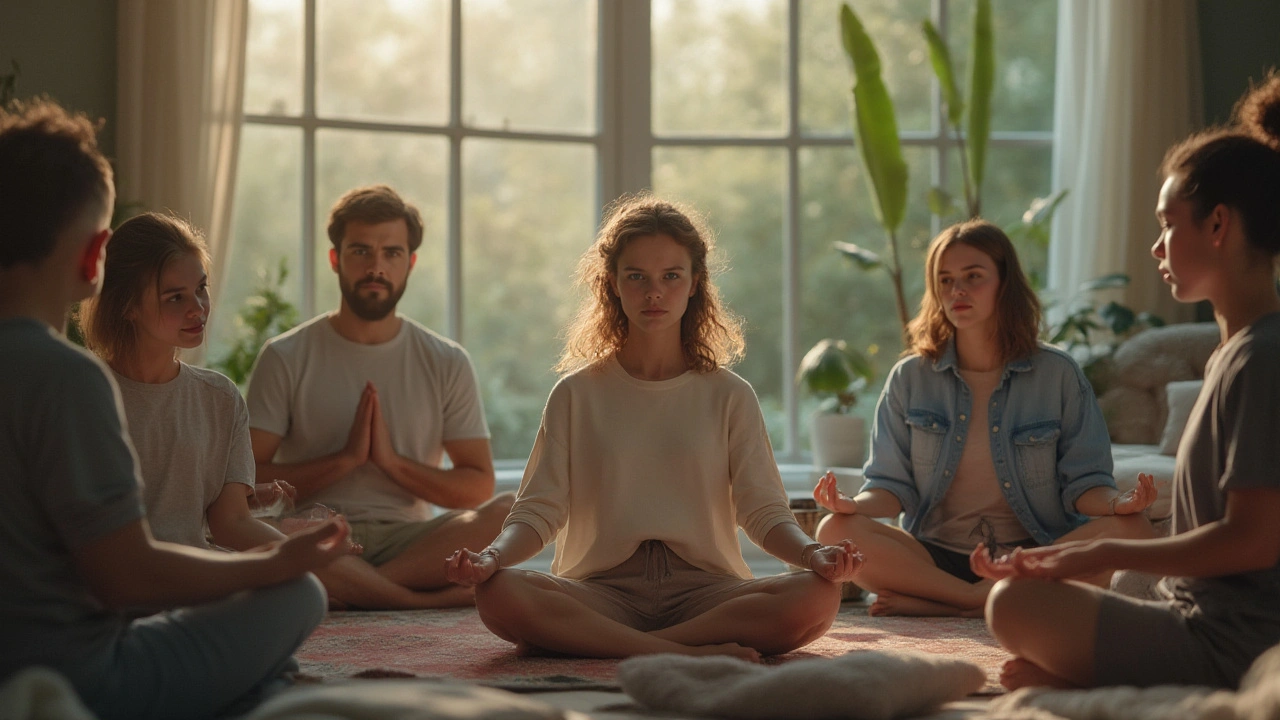Self-Regulation: Simple Tools to Calm Your Mind and Stay Focused
Ever lost your temper, felt your attention drift, or hit a wall with stress? That’s self-regulation—your ability to manage emotions, attention, and reactions so you act instead of react. You don’t need long retreats or pricey programs. Small, practical moves throughout the day make a big difference.
Quick tools you can use right now
Start with breathing. Try box breathing: inhale 4 seconds, hold 4, exhale 4, hold 4. Do this for one minute when you feel tense—your heart rate and focus often calm down fast.
Grounding works when your thoughts race. Look for 5 things you can see, 4 you can touch, 3 you can hear, 2 you can smell, 1 you can taste. It pulls your mind out of worry and into the present.
Use a mini body scan. Spend 30 seconds moving attention from your toes to your head. Notice tight spots and breathe into them. This reduces muscle tension and clears mental clutter.
Try the 5-4-3-2-1 sensory pause before responding in a stressful conversation. Pause, breathe, then reply. It stops impulsive reactions and protects relationships.
Biofeedback gives fast, measurable results if you want tech help—simple devices show your heart rate or breathing patterns and teach calm responses. See our guide “Biofeedback Therapy: Natural Solutions for Stress, Pain & Peak Wellness” for how it works.
Build habits that strengthen self-regulation
Daily routines are the backbone of self-regulation. Regular sleep, short morning relaxation, and a healthy breakfast set your energy and decision-making for the day. Check “Healthy Breakfast Benefits” or “Relaxation Techniques to Revamp Your Morning Routine” for easy morning wins.
Meditation trains attention. Even 5 minutes a day improves focus and reduces reactivity. If you have kids, short guided sessions can help them too—read “Meditation for Kids: Start Them Young for a Calmer Mind.”
Move your body. Exercise lowers stress hormones and makes emotional ups and downs easier to handle. After workouts, simple recovery habits like hydration and a health juice help you bounce back faster—see “Why Health Juice Is the Best Post-Workout Drink for Fast Recovery.”
Plan small goals and track tiny wins. Self-regulation grows when you prove to yourself you can stick to one small thing—five minutes of breathing, one walk, one mindful meal. Use reminders and pair the new habit with an existing cue (like brushing teeth or first coffee).
Finally, use supportive tools: aromatherapy for on-the-go calm, creative arts to process feelings, or sports massage if stress shows up in your muscles. Explore related reads on the site like “Aromatherapy: Unlocking Wellness and Calm with Scents” and “Creative Arts Therapies: How Art Heals Body and Mind.”
Pick one quick tool and one habit to try this week. Small practice plus consistency beats big effort once in a while. Want a guided next step? Open any article above and try a short exercise today.

Biofeedback Techniques for Mindfulness: Master Self-Regulation Easily
Discover how biofeedback helps master mindfulness and self-regulation. Explore practical facts, tips, and tech for real-life stress management.
Read More
Biofeedback for Stress Reduction: How It Works and Why You Should Try It
Discover how biofeedback helps tackle stress using real-time body signals. Learn about the technology, how it guides relaxation, and what sessions feel like. Get real-world tips from people who use it, plus science-backed facts on its effectiveness. Feel more in control with practical steps for getting started. Start using your body’s hidden data to relax better today.
Read More
Biofeedback: A Powerful Tool for Mind and Body
Hi there, it's me again, sharing insights about fascinating topics. Today, let's talk about biofeedback! It's an incredible tool that forms a crucial link between our mind and body, enabling us to use thoughts and feelings to influence physical function. This post dives into the world of biofeedback, exploring how this wellness tool can facilitate self-regulation and improve overall well-being. Join me in this fascinating journey!
Read More